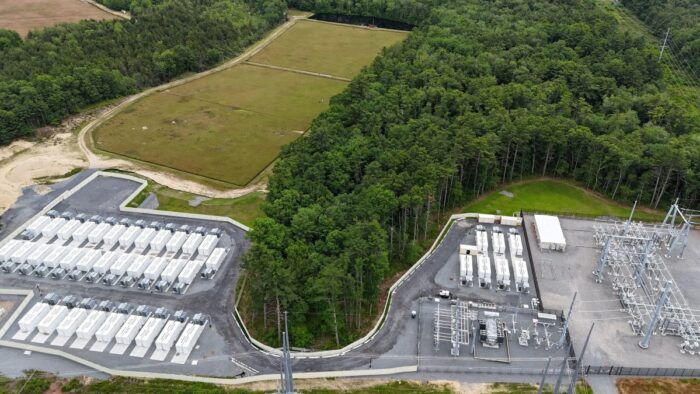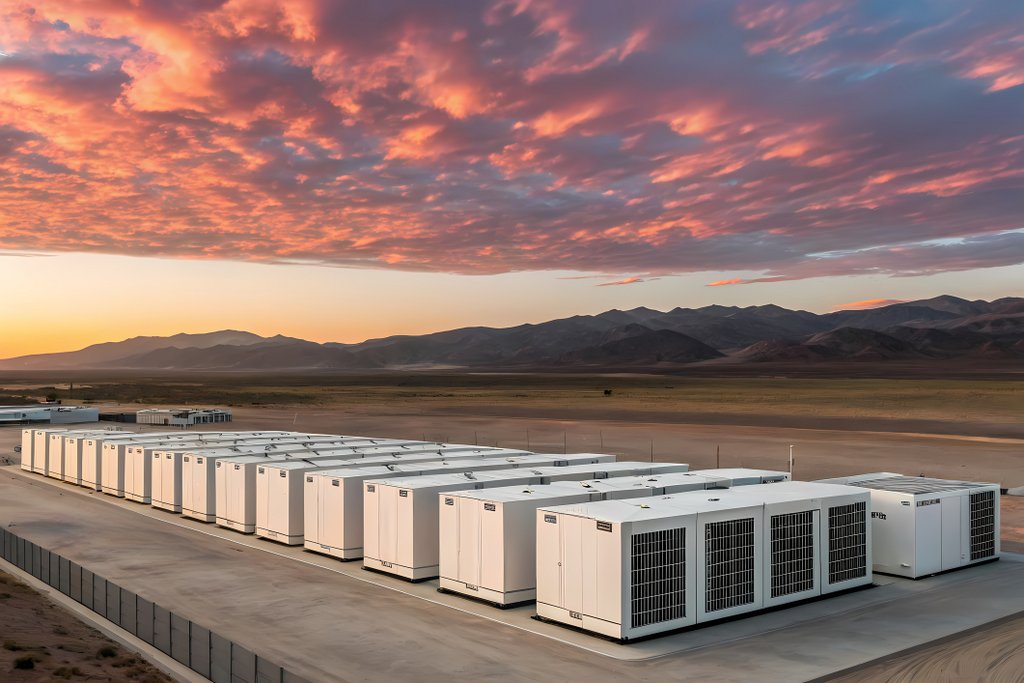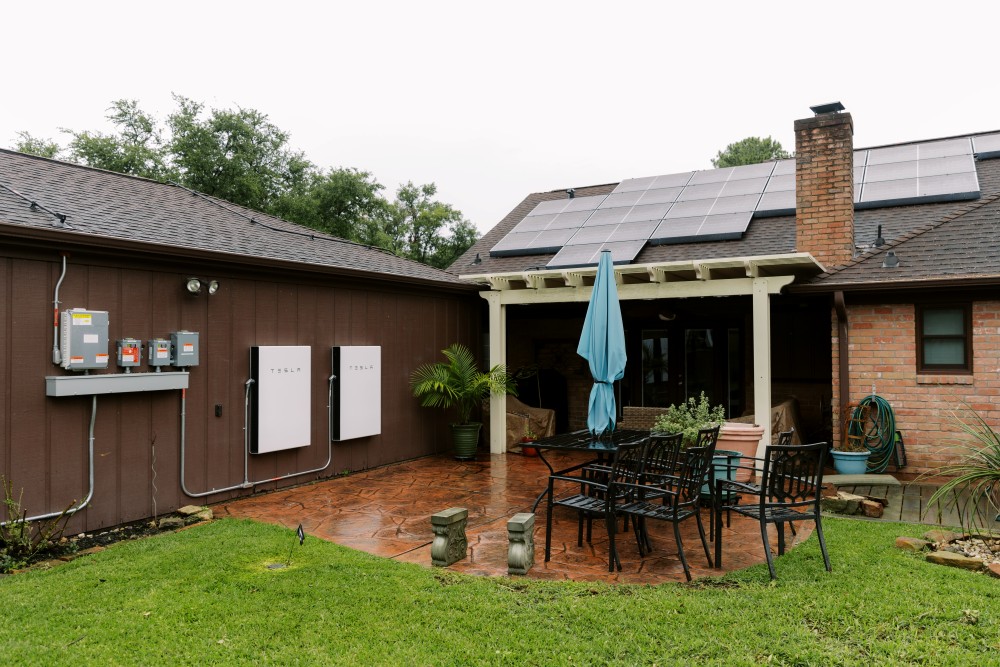New England’s largest utility-scale BESS goes live | Projects Weekly

Congratulations to my fellow RE+ survivors. It was a wild week of solar and storage spectacles, and we’ll be sharing our takeaways soon, but first we have a fresh slate of Projects Weekly to shout out. Kicking things off is New England’s largest utility-scale battery energy storage system (BESS) coming online, developed by Plus Power and built by Burns & McDonnell. Plus, Gallaudet University in Washington, D.C., the world’s first university for the deaf and hard of hearing, is reaping the benefits of one of the largest microgrids in the city; Summit Ridge Energy and Bank of America closed on a $305 million credit facility to support solar projects in Illinois and Maryland; NuGen Capital Management is investing $100 million in solar and energy storage projects across the United States; Nautilus Solar Energy has secured $275 million to accelerate community solar growth in Illinois, Maryland, Delaware, New York, and Rhode Island; and finally PowerBank Corp. has advanced two projects located on industrial brownfield sites in Skaneateles, New York.
Plus Power energizes Cranberry Point Energy Storage facility in Mass.

Plus Power has begun operating its Cranberry Point Energy Storage facility in Carver, Massachusetts. At 150 MW / 300 MWh, Cranberry Point is helping Massachusetts reach roughly a third of its goal to deploy 1,000 MWh of battery energy storage by 2025. This utility-scale battery project absorbs excess energy when customer demand is lower and stores it for use during times of peak demand. As such, it will help balance intermittent resources, while also ensuring power reliability as AI and data center deployment, economic growth, and conventional power plant retirements rapidly put new pressure on the grid.
Located on roughly six acres of land, Cranberry Point interconnects adjacent to Eversource’s Carver 115 kV substation. The Carver substation connects to a critically important north-south transmission line between new energy resources and demand in Boston. Cranberry Point features 82 Tesla Megapack 2 XL battery enclosures. Plus Power worked with Burns & McDonnell on engineering, procurement and construction of the facility. Over the course of construction and commissioning, the project utilized 135 skilled workers spanning a variety of trade organizations from the region.
Cool factor: Cranberry Point Energy Storage is the largest utility-scale standalone BESS facility on New England’s grid. The facility is a significant milestone in the buildout supporting New England’s energy infrastructure and grid reliability. In February 2021, Cranberry Point was one of the first battery storage facilities to secure a Capacity Supply Obligation with the Independent System Operator of New England, or ISO-NE.
“Plus Power is proud to deliver this landmark facility for the Commonwealth and honored to contribute to power reliability, energy affordability, and emissions reduction in the region,” said Alex Fraenkel, co-founder and executive vice chairman of Plus Power. “We look forward to being a model for ISO-NE on battery performance and an excellent neighbor for many years to come.”
Historic Gallaudet University’s microgrid shows reliability of DER
More than 150 years after its founding, the world’s first university for the deaf and hard of hearing is making a different kind of history. Gallaudet University in Washington, D.C., is reaping the benefits of one of the largest microgrids in the city, which school officials installed on the campus in 2023.
The university’s director of energy and experts from the clean energy financing initiative Urban Ingenuity (an affiliate of Working Power, an organization that co-develops clean energy projects) and distributed energy company Scale Microgrids worked together to develop the microgrid. Officials from each entity led a tour for staff members from The Pew Charitable Trusts and university faculty to showcase the facility and explain distributed energy resources and the benefits they yield for the campus and community.
Cool factor: Gallaudet’s microgrid combines multiple forms of distributed energy resources (DER), including hundreds of solar panels spread across seven rooftops; any energy the school doesn’t use immediately can be stored in a campus battery. By producing most of its own energy on-site, Gallaudet is easing the burden on the local utility grid — and the university’s energy bill.
“The main reason for the microgrid is it’s going to save the university a lot of money,” said Dave Good, director of energy, utilities, and sustainability at Gallaudet University. “We anticipate it’s going to save about 40% on our energy bills every year, which is millions of dollars. It’s a very good investment. It’s going to have a relatively quick return.”
The microgrid has other benefits: It’s a resilient backup in the event of grid outages—no small matter in an era of increasingly frequent severe weather—and provides clean energy to D.C. neighborhoods through Washington’s community solar program, administered through local utility, Pepco.
Summit Ridge secures $305 million for 158 MW community solar portfolio

Summit Ridge Energy has closed on a $305 million senior secured credit facility with Bank of America to support a portfolio of community solar projects across Illinois and Maryland, totaling 158 MW of capacity. The facility was raised alongside HASI, a leading investor in sustainable infrastructure assets.
Bank of America acted as Structuring Agent, Syndication Agent, Coordinating Lead Arranger, Administrative Agent, Hedge Provider, and LC Fronting Bank for the oversubscribed transaction, which included ING Capital as Green Loan Structuring Agent and Coordinating Lead Arranger, and KeyBanc Capital Markets as Coordinating Lead Arranger.
Cool factor: The financing package, which includes a $281 million term loan and a $24 million letter of credit facility, will provide term financing for the portfolio. The projects are expected to deliver reliable energy savings to 5,000 households and businesses, while generating significant local tax revenue and creating 3,000 jobs in construction, engineering, and long-term operations.
“This financing marks another significant milestone for Summit Ridge,” said Adam Kuehne, chief investment officer at Summit Ridge Energy. “Expanding our partnership with Bank of America enables us to grow our footprint in Illinois and Maryland, providing cost savings for thousands of customers while advancing America’s energy independence with U.S.-made components and local labor.”
NuGen Capital Management to invest $100 million in solar projects
NuGen Capital Management LLC is making an additional investment of $100 million into near-term and operating solar and storage projects across the United States.
Powered by its team’s cross-sector expertise in energy solutions, real estate, finance and more, NuGen is equipped to handle every phase of clean energy projects, including financing, tax credit strategies, development, construction, operation and management. The company is currently seeking partners across the energy ecosystem, including developers, landowners, project owners and operators, or others, to purchase projects that deliver long-term value in their respective communities.
Cool factor: NuGen currently manages more than $250 million in investments, comprising a diverse portfolio of solar, storage, real estate and electric mobility projects across the country. These projects reduce strain on local utilities and provide municipalities, school districts, businesses and communities with reliable, affordable power.
“Since our founding in 2010, NuGen’s mission has been to accelerate America’s energy transition with impactful investment solutions and innovative asset strategies that unlock reliable and affordable new energy sources,” said Laura Frazier, NuGen’s managing director, business development and strategy. “When we invest in a project, we take pride in forging full-service, always-on relationships with our partners to ensure the unique needs of every project and every customer are being met. We look forward to building on our strong network of partners with this significant level of investment.”
Nautilus secures $275 million for community solar growth in five states
Nautilus Solar Energy LLC has closed on a $275 million, long-term debt facility, marking the company’s largest single debt transaction to date. The deal expands Nautilus’s lender base with three new financial partners (MUFG, SMBC, and Apterra Infrastructure Capital), underscoring strong market confidence in Nautilus and the long-term value of community solar.
“This is the largest single debt raising effort in Nautilus’s history, and the first time we’ve brought on a completely new group of lending partners all at one time,” said Camelia Miu, chief financial officer of Nautilus Solar Energy. “Securing a $275 million commitment in today’s challenging debt market demonstrates the strength of our business and the confidence well-respected financial institutions have in our model. Most importantly, this capital accelerates our ability to deliver more community solar projects that expand access to the benefits of clean energy.”
Cool factor: The new capital will support more than 25 community solar projects scheduled to become operational over the next year across Illinois, Maryland, Delaware, New York, and Rhode Island. Together, these projects will add more than 130 MW of capacity to local energy grids and increase Nautilus’s total operating and managed portfolio to 700 MW. The expansion will deliver clean, affordable energy to more than 11,000 households and small businesses.
The deal highlights the important role community solar plays in expanding energy access, supporting local economic growth, and driving the transition to a more sustainable energy future.
PowerBank advances 14.4 MW brownfield projects in New York
PowerBank Corp. has secured all required municipal approvals, including variances, site plan approval and special use permit for two projects located on industrial brownfield sites in Skaneateles, New York. Located in the Finger Lakes region of New York, in Onondaga County, the projects will now pursue N.Y. Department of Environmental Conservation approval to enter construction.
Cool factor: Following receipt of the necessary permits and financing, PowerBank intends to commence the construction of the projects. Once completed, each of the projects will be operated as a community solar project. Once the panels are turned on and generating electricity, renewable energy from the site feeds into the local power grid.





Comments are closed here.